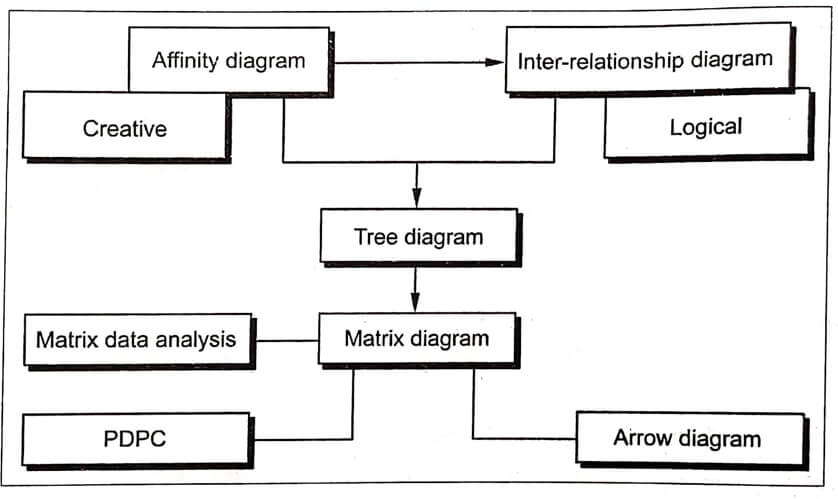INTRODUCTION
✔ In addition to the seven basic quality tools described in the previous chapter, the ‘new’ seven management tools are also widely used by the managers for quality management.
✔ The seven basic quality tools are mostly useful for quantitative problems, whereas the new seven management tools are defined for the qualitative problems.
✔ These qualitative tools, also known as ‘seven management and planning tools’ are helpful for the managers: (i) to organise large amounts of non-quantitative data; (ii) to create hypotheses; (iii) to clarify inter-relationships; and (iv) to establish priorities.
✔ The new seven management tools and their purpose are summarised in Table .1.
| S. No. | Management tools | Purpose |
| 1. | Affinity (KJ) diagram | For synthesizing, classifying, organizing indefinite ideas. |
| 2. | Relationship diagram | For isolating cause-and-effect relationships. |
| 3. | Tree diagram | For deploying general concepts into details. |
| 4. | Matrix diagram | For correlating in a logical form, in order to evaluate, select, and decide. |
| 5. | Matrix data analysis | For quantifying relationships. |
| 6. | Decision tree (PDPC) | For identifying alternatives. |
| 7. | Arrow diagram (PERT) | For planning. |
✔ Since these seven tools are interrelated, Fig .1 shows the order in which these tools can be used to understand a problem.

Fig 1. The interrelation between the seven new management tools




